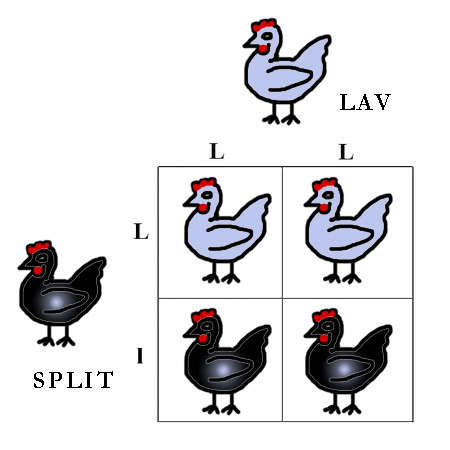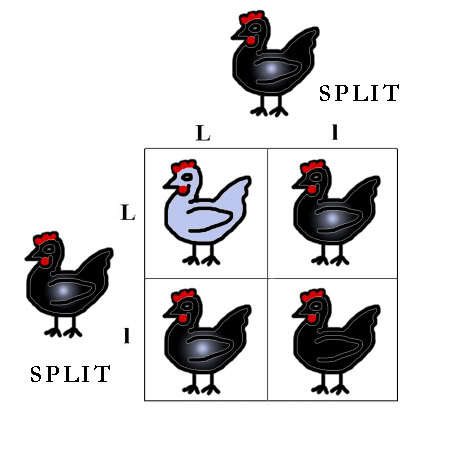Quote:
Thank you, that does clarify things some for me, well said.
 Sorry scbatz, I just wasn't putting two and two together. That's what happens when your brain is scrambled having a six month old.
Sorry scbatz, I just wasn't putting two and two together. That's what happens when your brain is scrambled having a six month old.

Been there, done that! The short answer is if you have a black hen and you have a lavender roo(or vise verse) and you are only getting black chicks, you do not have a "split". All the offspring of the cross however, IS "split" If you are getting both lav and black chicks, then your black adult is "split".
I don't know if anyone else is having this, but I have noticed that some of my offspring from a similar mating are bleeding through lavender. Sometimes, black orps will show some white feathering in their first set and it disappears after molt into adult feathering, but my chicks are "bleeding" lavender. It's actually very cool.
I have noticed in Cochins this occurs when the chick is carrying the Mottled gene- it makes me wonder if you're seeing it for that reason, rather than due to a Lavender bleed-through. I'm seeing some of it, as well, and I'm banding those chicks differently so I can observe whether this is the case.
Intriguing!
Thank you, that does clarify things some for me, well said.


Been there, done that! The short answer is if you have a black hen and you have a lavender roo(or vise verse) and you are only getting black chicks, you do not have a "split". All the offspring of the cross however, IS "split" If you are getting both lav and black chicks, then your black adult is "split".
I don't know if anyone else is having this, but I have noticed that some of my offspring from a similar mating are bleeding through lavender. Sometimes, black orps will show some white feathering in their first set and it disappears after molt into adult feathering, but my chicks are "bleeding" lavender. It's actually very cool.
I have noticed in Cochins this occurs when the chick is carrying the Mottled gene- it makes me wonder if you're seeing it for that reason, rather than due to a Lavender bleed-through. I'm seeing some of it, as well, and I'm banding those chicks differently so I can observe whether this is the case.
Intriguing!





